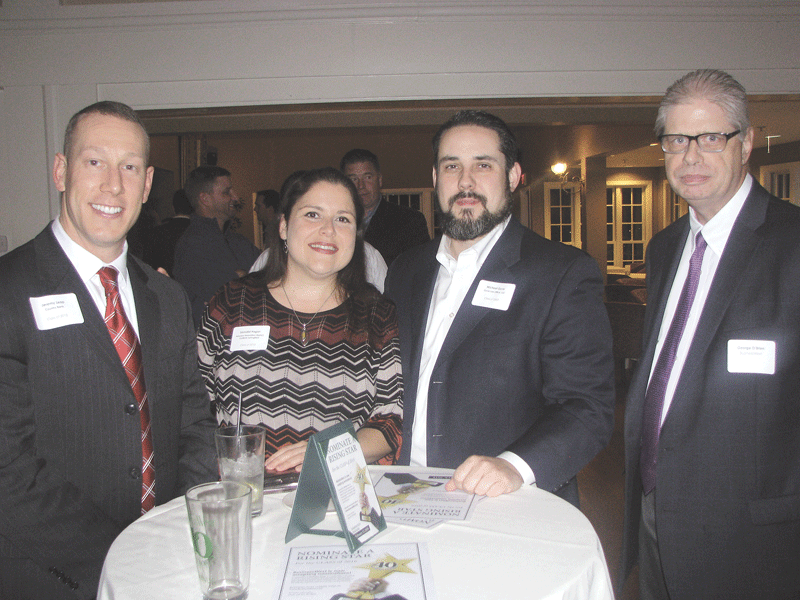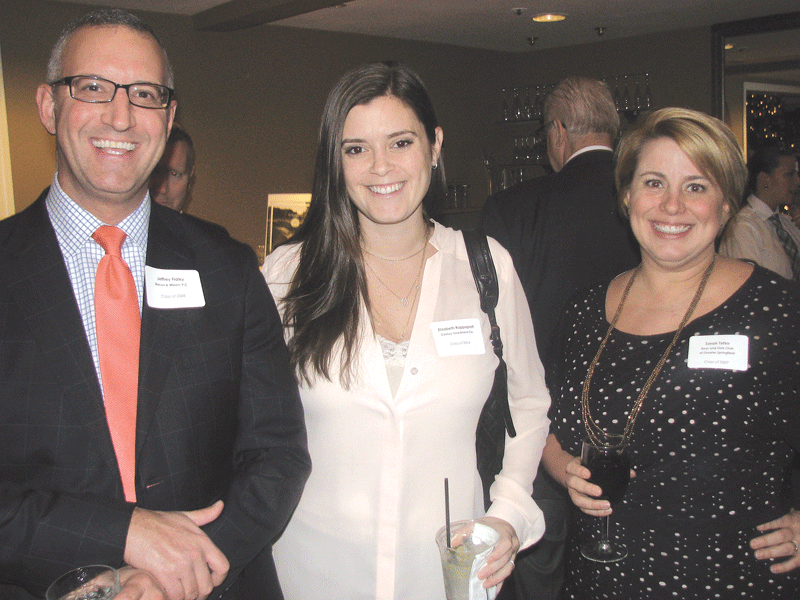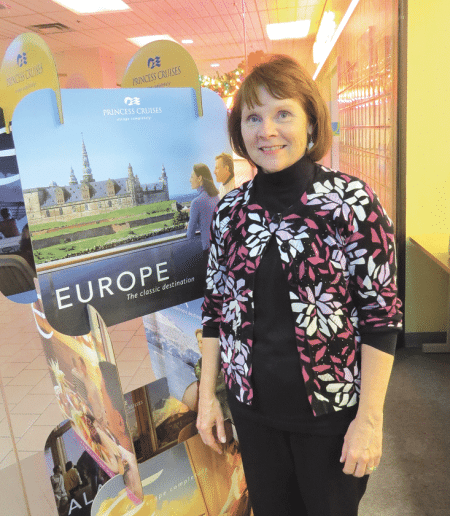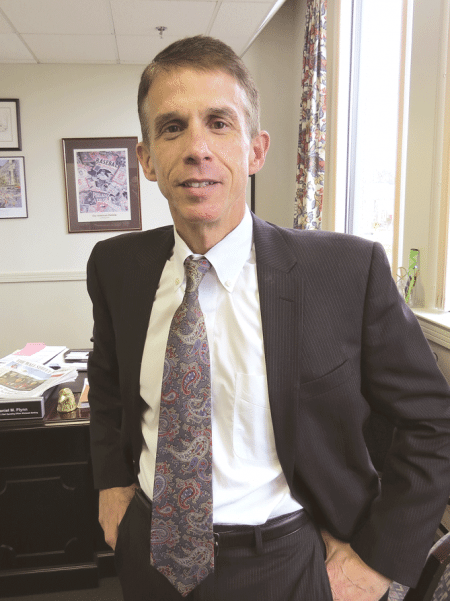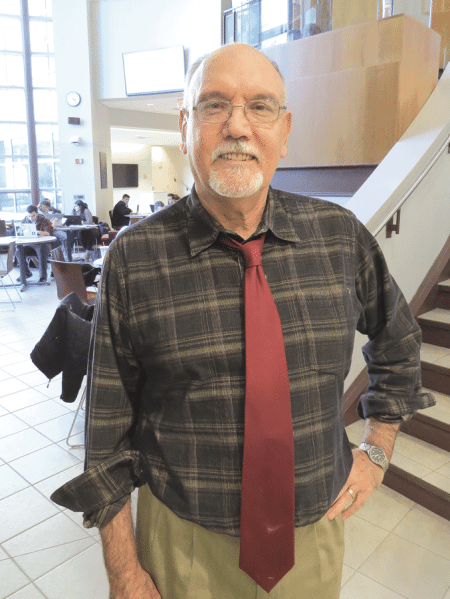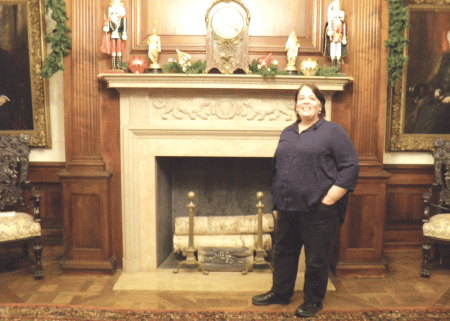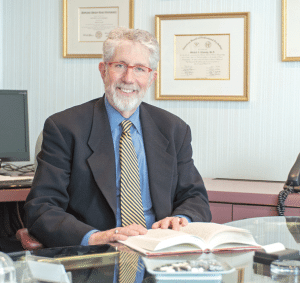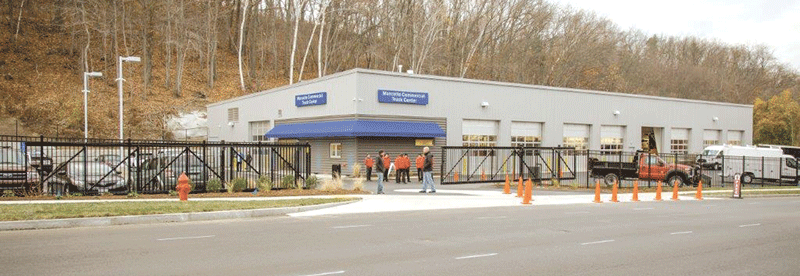HAMPDEN COUNTY
AGAWAM
204 Elm St.
Agawam, MA 01001
Amount: $322,150
Buyer: Citimortgage Inc.
Seller: Gary L. Gordon
Date: 11/09/15
32 Fordham Ave.
Agawam, MA 01030
Amount: $235,000
Buyer: Michael P. Bachini
Seller: Scott G. Monson
Date: 11/06/15
42 Hall St.
Agawam, MA 01030
Amount: $152,500
Buyer: Agostino F. Demaio
Seller: Cestari, Victor P., (Estate)
Date: 11/02/15
840 North St.
Agawam, MA 01030
Amount: $168,000
Buyer: Susan K. Douglas
Seller: Christopher B. Garrity
Date: 11/06/15
67 Reed St.
Agawam, MA 01001
Amount: $227,000
Buyer: Karen B. Legace
Seller: Robert S. Ferrier
Date: 11/10/15
5 Silver Lake Dr.
Agawam, MA 01001
Amount: $370,000
Buyer: Shawn R. Dominik
Seller: Ernest R. Silkey RET
Date: 11/06/15
BRIMFIELD
152 Wales Road
Brimfield, MA 01010
Amount: $242,500
Buyer: Jeffrey Macphee
Seller: James A. Coulter
Date: 11/06/15
CHICOPEE
113 Beauchamp Terrace
Chicopee, MA 01020
Amount: $164,000
Buyer: Tamrah Stepien
Seller: Michael A. Monopoli
Date: 11/06/15
39 Bemis Ave.
Chicopee, MA 01020
Amount: $115,000
Buyer: G. Rodrigues-DeAraujo
Seller: McGrath, Mary B., (Estate)
Date: 11/06/15
44 Bonner St.
Chicopee, MA 01013
Amount: $123,750
Buyer: Bank New York
Seller: Michael A. Jones
Date: 11/06/15
82 Borys Circle
Chicopee, MA 01013
Amount: $193,000
Buyer: Samantha Wong
Seller: Mark J. Botelho
Date: 11/04/15
52 Boucher Circle
Chicopee, MA 01020
Amount: $159,566
Buyer: FNMA
Seller: Nelson Walton
Date: 11/05/15
35 Center St.
Chicopee, MA 01013
Amount: $435,000
Buyer: Center Group LLC
Seller: 35 Center St. LLC
Date: 11/04/15
57 Garland St.
Chicopee, MA 01020
Amount: $175,000
Buyer: Elizabeth A. Barnes
Seller: Richard M. Fugere
Date: 11/06/15
1003 Montgomery St.
Chicopee, MA 01013
Amount: $197,500
Buyer: Jeffrey W. Kane
Seller: Stanislaw Beben
Date: 11/06/15
26 Park St.
Chicopee, MA 01013
Amount: $160,000
Buyer: Orquidia C. Davila
Seller: Alda M. Carreira
Date: 11/02/15
94 Prospect St.
Chicopee, MA 01013
Amount: $449,000
Buyer: Maddox Realty LLC
Seller: 94 Prospect Street LLC
Date: 11/10/15
25 Randall St.
Chicopee, MA 01013
Amount: $155,000
Buyer: Roy J. Gladu
Seller: Nancy M. Benard
Date: 11/06/15
14 Richelieu St.
Chicopee, MA 01020
Amount: $138,000
Buyer: Kassandra O’Connor
Seller: McDonald, Mary L., (Estate)
Date: 11/03/15
70 Stearns Terrace
Chicopee, MA 01013
Amount: $135,650
Buyer: Jessica Reyes
Seller: Justin P. O’Connor
Date: 11/03/15
EAST LONGMEADOW
28 Edmund St.
East Longmeadow, MA 01028
Amount: $307,500
Buyer: Thomas R. Nipps
Seller: Nu-Way Homes Inc.
Date: 11/03/15
319 Elm St.
East Longmeadow, MA 01028
Amount: $195,000
Buyer: Jason T. Dalessio
Seller: Robert W. Chapin
Date: 11/03/15
39 Favorite Lane
East Longmeadow, MA 01028
Amount: $549,000
Buyer: Charles N. Brinkmann
Seller: Mark J. Miller
Date: 11/05/15
24 Fraser Dr.
East Longmeadow, MA 01028
Amount: $208,000
Buyer: Gilles A. Grenier
Seller: Elizabeth Franceschelli
Date: 11/06/15
4 Panama St.
East Longmeadow, MA 01028
Amount: $168,000
Buyer: Khanh Nguyen
Seller: Kevin Wong
Date: 11/06/15
90 Pease Road
East Longmeadow, MA 01028
Amount: $169,000
Buyer: Janet S. Rowe
Seller: Barbara J. Stachowiak
Date: 11/05/15
198 Tanglewood Dr.
East Longmeadow, MA 01028
Amount: $345,000
Buyer: Steven Vigneault
Seller: Corey Turer
Date: 11/06/15
53 Tanglewood Dr.
East Longmeadow, MA 01028
Amount: $250,000
Buyer: Adriano Bocchino
Seller: Webster Bank
Date: 11/06/15
54 Thompkins Ave.
East Longmeadow, MA 01028
Amount: $207,500
Buyer: Vinhhoa T. Nguyen
Seller: James E. Murray
Date: 11/02/15
34 Westernview Circle
East Longmeadow, MA 01028
Amount: $284,900
Buyer: Jacqueline M. Chapdelaine
Seller: Paul S. Dunkerley
Date: 11/02/15
GRANVILLE
484 Main Road
Granville, MA 01034
Amount: $250,000
Buyer: Matthew K. Berndt
Seller: Matthew S. Jones
Date: 11/04/15
HOLLAND
231 Brimfield Road
Holland, MA 01521
Amount: $160,000
Buyer: Chelsea Tavernier
Seller: Gregory N. Morin
Date: 11/05/15
HOLYOKE
30 Anderson Ave.
Holyoke, MA 01040
Amount: $152,000
Buyer: Rachelle Encarnacion
Seller: Rosalie G. Hobert
Date: 11/06/15
39 Dillon Ave.
Holyoke, MA 01040
Amount: $220,000
Buyer: Rafael A. Roca
Seller: Kirk R. Krause
Date: 11/04/15
6 Hendel Dr.
Holyoke, MA 01040
Amount: $195,400
Buyer: David J. Beauregard
Seller: Valerie B. Ennis
Date: 11/04/15
283 Linden St.
Holyoke, MA 01040
Amount: $142,400
Buyer: Michael Siciliano
Seller: Audra E. Smith
Date: 11/04/15
5 Michelle Lane
Holyoke, MA 01040
Amount: $403,000
Buyer: Jacob T. Waah
Seller: J. N. Duquette & Son Construction
Date: 11/04/15
LONGMEADOW
19 Edgemont St.
Longmeadow, MA 01106
Amount: $195,000
Buyer: Moochul Shin
Seller: Linda L. Bernard
Date: 11/03/15
67 Longview Dr.
Longmeadow, MA 01106
Amount: $515,000
Buyer: James H. Stewart
Seller: David C. Berube
Date: 11/06/15
37 Massachusetts Ave.
Longmeadow, MA 01106
Amount: $220,000
Buyer: Michael F. Nothe
Seller: Kevin D. Hebert
Date: 11/09/15
104 Tecumseh Dr.
Longmeadow, MA 01106
Amount: $340,000
Buyer: Lauren K. Young
Seller: Kristy M. Hemond
Date: 11/02/15
119 Yarmouth St.
Longmeadow, MA 01106
Amount: $233,500
Buyer: Pao L. Wu
Seller: Irving Slitzky
Date: 11/04/15
28 Yarmouth St.
Longmeadow, MA 01106
Amount: $247,500
Buyer: Eric Chrabascz
Seller: Kevin P. McKenna
Date: 11/06/15
LUDLOW
33 Ampere Ave.
Ludlow, MA 01056
Amount: $191,000
Buyer: David J. Vakalis
Seller: Julie A. Cass
Date: 11/05/15
255 Elizabeth Dr.
Ludlow, MA 01056
Amount: $383,957
Buyer: FNMA
Seller: Jose Franco
Date: 11/04/15
156 Erin Lane
Ludlow, MA 01056
Amount: $260,000
Buyer: Domingos F. Afonso
Seller: Marilyn E. Wheelock
Date: 11/05/15
75-79 Howard St.
Amount: $283,000
Buyer: Mark J. Botelho
Seller: Delfina A. Carvalho
Date: 11/05/15
263 Westerly Circle
Ludlow, MA 01056
Amount: $420,000
Buyer: Abbas Younes
Seller: Helmut K. Marosits
Date: 11/06/15
MONSON
104 Stebbins Road
Monson, MA 01057
Amount: $129,200
Buyer: FNMA
Seller: Albert Sherman
Date: 11/03/15
68 Wilbraham Road
Monson, MA 01057
Amount: $255,000
Buyer: Kenneth A. Villamarin
Seller: Linda Dill-Johnson
Date: 11/04/15
PALMER
43 Flynt St.
Palmer, MA 01069
Amount: $215,000
Buyer: Bryan P. Forrette
Seller: Joyce A. Piechota
Date: 11/05/15
20 Orchard St.
Palmer, MA 01069
Amount: $130,000
Buyer: Kermen Cedeno
Seller: Sandra L. Topor
Date: 11/10/15
1192 Thorndike St.
Palmer, MA 01069
Amount: $153,000
Buyer: Heather M. McIntire
Seller: Carolyn J. Bedard
Date: 11/05/15
RUSSELL
171 Main St.
Russell, MA 01008
Amount: $128,780
Buyer: US Bank
Seller: Laurie A. Hoppe
Date: 11/06/15
SPRINGFIELD
90 Abbott St.
Springfield, MA 01118
Amount: $179,900
Buyer: Caitlin A. Welz
Seller: Donna B. Lopez
Date: 11/02/15
1122 Bay St.
Springfield, MA 01109
Amount: $350,000
Buyer: Markdon Realty LLC
Seller: B&D Petroleum Sales Inc.
Date: 11/03/15
49 Bellamy Road
Springfield, MA 01119
Amount: $143,000
Buyer: Western New England University
Seller: Stefan Hluschewskyj
Date: 11/05/15
157 Bowles Park
Springfield, MA 01104
Amount: $117,500
Buyer: Stephen G. Laplante
Seller: Rita L. Banks
Date: 11/10/15
1189 Bradley Road
Springfield, MA 01118
Amount: $154,900
Buyer: Anthony L. Kumiega
Seller: Steven E. Lee
Date: 11/09/15
190 Emerson St.
Springfield, MA 01118
Amount: $173,000
Buyer: Eric R. Rosado
Seller: Jason T. Dalessio
Date: 11/03/15
90 Gillette Ave.
Springfield, MA 01118
Amount: $152,000
Buyer: Thomas M. Korzec
Seller: Vincent Mazzariello
Date: 11/03/15
167 Gillette Ave.
Springfield, MA 01118
Amount: $155,500
Buyer: Peiwei Li
Seller: Rachel J. Kuhn
Date: 11/04/15
155-157 Laconia St.
Springfield, MA 01129
Amount: $160,000
Buyer: Steven A. Monteiro
Seller: PAS Development Inc.
Date: 11/09/15
237 Longhill St.
Springfield, MA 01108
Amount: $228,000
Buyer: Christopher E. Dancy
Seller: H. Douglas Barnshaw
Date: 11/04/15
27 Margerie St.
Springfield, MA 01109
Amount: $117,000
Buyer: Madeline Vargas
Seller: MBC Properties LLC
Date: 11/06/15
34 Mark St.
Springfield, MA 01129
Amount: $127,133
Buyer: FNMA
Seller: Nicholas Korniotes
Date: 11/06/15
101 Martel Road
Springfield, MA 01119
Amount: $205,000
Buyer: Darby J. McLaughlin
Seller: Robert M. Zanolli
Date: 11/03/15
126-128 Orange St.
Springfield, MA 01108
Amount: $125,000
Buyer: Miladys A. Marte
Seller: Jonathan Horning
Date: 11/05/15
20 Paramount St.
Springfield, MA 01104
Amount: $164,000
Buyer: Lizenia Montanez
Seller: Deutsche Bank
Date: 11/06/15
343 Plumtree Road
Springfield, MA 01118
Amount: $174,000
Buyer: Clifford P. Jensen
Seller: Michael W. Heiligmann
Date: 11/06/15
637 Plumtree Road
Springfield, MA 01118
Amount: $132,500
Buyer: Lisa M. Rivera
Seller: Sara J. Jacobsen
Date: 11/05/15
146 Powell Ave.
Springfield, MA 01118
Amount: $142,000
Buyer: April C. McLain
Seller: Darby McLaughlin
Date: 11/03/15
15 Rogers Ave.
Springfield, MA 01151
Amount: $139,900
Buyer: Rafel Marte
Seller: James W. Fiore
Date: 11/10/15
58 Shawmut St.
Springfield, MA 01108
Amount: $118,450
Buyer: Jose Suarez
Seller: Revampit LLC
Date: 11/06/15
509 Wilbraham Road
Springfield, MA 01109
Amount: $115,000
Buyer: Lynhq A. B. LT
Seller: Craig J. Difranco
Date: 11/10/15
129-131 Woodlawn St.
Springfield, MA 01108
Amount: $170,000
Buyer: Chandra Tamang
Seller: Trevor Crichlow
Date: 11/09/15
33 Worthy St.
Springfield, MA 01104
Amount: $120,000
Buyer: Anthony J. Dejesus
Seller: Oussama Awkal
Date: 11/10/15
WEST SPRINGFIELD
20 Connecticut Ave.
West Springfield, MA 01089
Amount: $165,000
Buyer: KSC Holdings LLC
Seller: Exhaust Services LLC
Date: 11/10/15
537 Dewey St.
West Springfield, MA 01089
Amount: $265,000
Buyer: Robert J. Benoit
Seller: Shawn R. Dominik
Date: 11/06/15
25 Mulcahy Dr.
West Springfield, MA 01089
Amount: $130,000
Seller: Francis Wheeler Construction
Date: 11/04/15
87 Tatham Hill Road
West Springfield, MA 01089
Amount: $225,000
Buyer: Guidewire Inc.
Seller: Robert E. Hosmer
Date: 11/05/15
19 Wayside Ave.
West Springfield, MA 01089
Amount: $285,000
Buyer: Joseph Spano
Seller: Valle Machine Knife Corp.
Date: 11/02/15
152 Wilder Terrace
West Springfield, MA 01089
Amount: $143,000
Buyer: C. Francoeur-Weckerly
Seller: Amy E. Schaetzer
Date: 11/04/15
WESTFIELD
19 Grenier Dr.
Westfield, MA 01085
Amount: $187,000
Buyer: Jared C. Lent
Seller: David A. Rose
Date: 11/05/15
23 Harrison Ave.
Westfield, MA 01085
Amount: $200,000
Buyer: David A. Rose
Seller: Charles J. Bull
Date: 11/05/15
11 King Ave.
Westfield, MA 01085
Amount: $186,250
Buyer: Double D Investments LLC
Seller: Laura M. Richardson
Date: 11/05/15
62 Kittredge Dr.
Westfield, MA 01085
Amount: $255,000
Buyer: Steven M. Mielke
Seller: Steven C. Clark
Date: 11/05/15
67 Murray Ave.
Westfield, MA 01085
Amount: $129,600
Buyer: Citimortgage Inc.
Seller: Gerald D. Regan
Date: 11/09/15
5 Northridge Road
Westfield, MA 01085
Amount: $220,000
Buyer: Richard A. Labonte
Seller: Kathryn V. Roberts
Date: 11/09/15
130 Sackett Road
Westfield, MA 01085
Amount: $175,000
Buyer: Joseph Spano
Seller: John Spano
Date: 11/03/15
151 Sackett Road
Westfield, MA 01085
Amount: $197,700
Buyer: Chad E. Sico
Seller: Gary C. Sico
Date: 11/05/15
4 Smith Ave.
Westfield, MA 01085
Amount: $190,000
Buyer: Wesley Sobczyk
Seller: Bonnie E. Miller
Date: 11/10/15
432 Southwick Road
Westfield, MA 01085
Amount: $248,500
Buyer: Abdulsalam Alsaleh
Seller: Florence L. Buzzee
Date: 11/10/15
2 Western Ave.
Westfield, MA 01085
Amount: $175,000
Buyer: James McGowan
Seller: Carolyn M. Clini
Date: 11/06/15
WILBRAHAM
181 Burleigh Road
Wilbraham, MA 01095
Amount: $405,000
Buyer: Robert N. Massaro
Seller: Jennifer T. Thayer
Date: 11/04/15
461-465 Main St.
Wilbraham, MA 01095
Amount: $325,000
Buyer: Sushilaben H. Patel
Seller: Louis & Clark Realty LLC
Date: 11/05/15
29 Pineywood Ave.
Wilbraham, MA 01095
Amount: $164,900
Buyer: Logan Gumlaw
Seller: William J. Laporte
Date: 11/06/15






